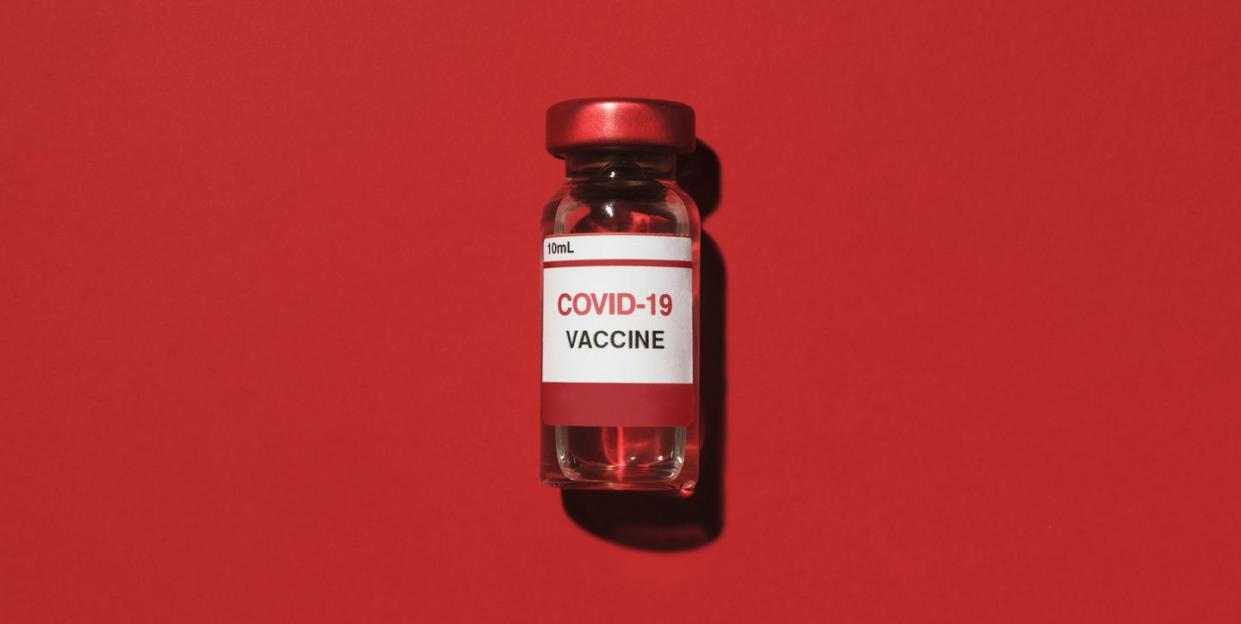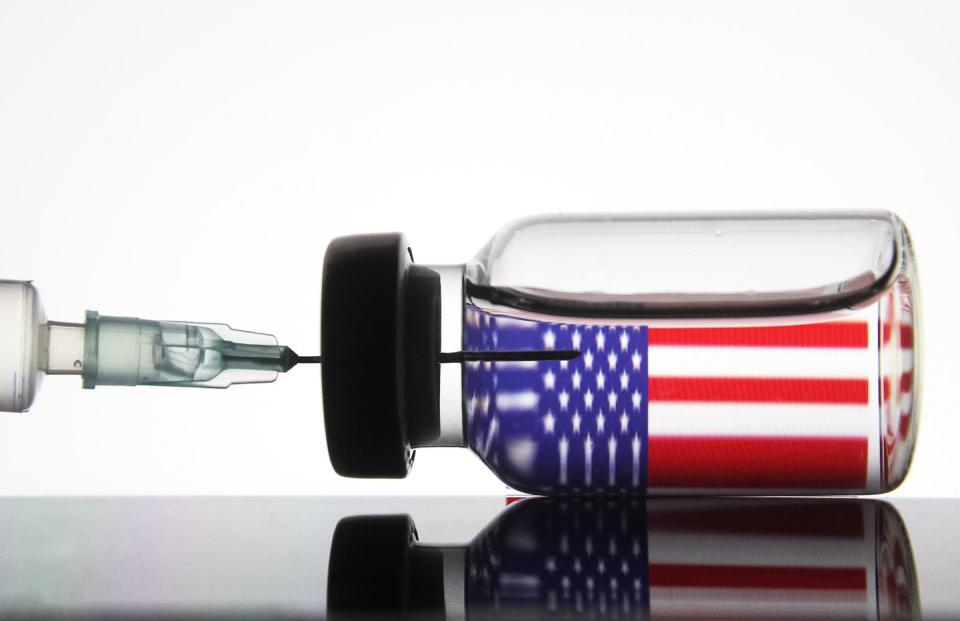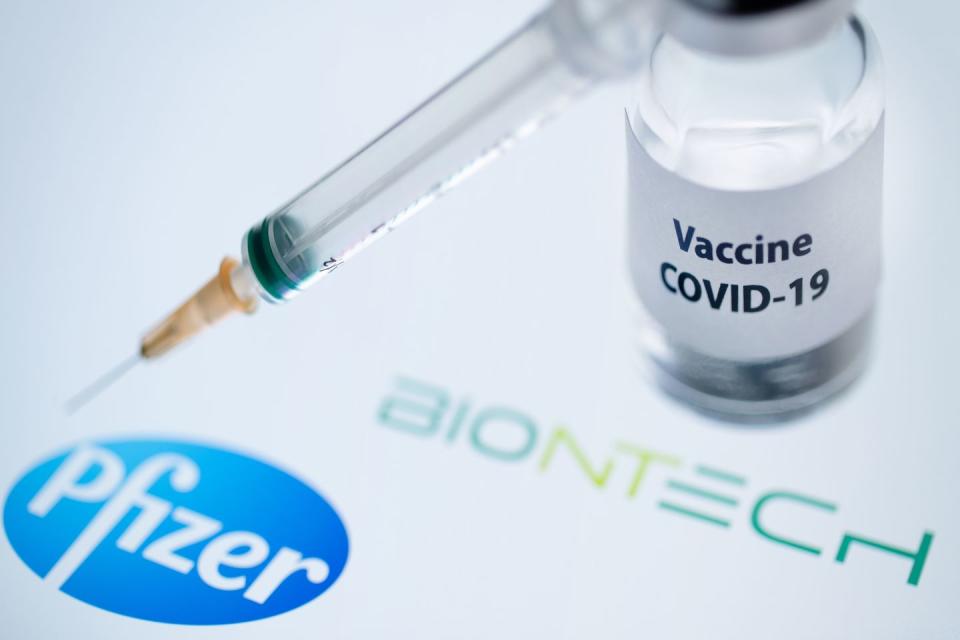Everything You Need to Know About mRNA, the COVID-19 Vaccine’s Secret Weapon

Two mRNA vaccines from Pfizer and Moderna are nearing final approval, and both work by rewiring a genetic trigger.
SARS-CoV-2, the novel coronavirus that causes COVID-19, has a unique physical structure that can be used to prime immune response.
An mRNA vaccine has never been approved before, but other mRNA drugs exist.
After a remarkably accelerated development period, two experimental COVID-19 vaccines are almost ready for primetime. Both use a technology called messenger RNA (mRNA), which has been studied and experimented with for decades in different forms, but has never been used in a commercial vaccine.
Pfizer and Moderna, the companies behind the two most promising mRNA vaccines, are building on years of research, as well as growing track records with some complex and cutting-edge therapies for other health conditions.
So what is mRNA? And will the experimental tech actually be the secret weapon that saves the world from the coronavirus?
What is mRNA?
So-called “messenger” genetics do just what they say on the tin: deliver genetic information to parts of your body, usually in order to overwrite or erase the genetic information that’s already there. Your body naturally makes and uses mRNA already. It’s one of three kinds of ribonucleic acid (RNA) that all work together to translate pure genetic deoxyribonucleic acid (DNA) information into proteins in your body. It’s taken scientists decades to identify this specific mechanic and turn it into medicine.
Think of DNA as a read-only file on your computer. Let’s say you pop in the install CD-ROM for Microsoft Word 2000 in your Windows XP PC in 2001. When the disc runs, it copies all the files you need into your computer, and the original files are untouched. Or when someone shares a Google Drive file, you must copy the file before you can update it. This is how RNA “transcribes” DNA’s instructions into the first steps of expressing those genes in your body.
That means the right kind of therapeutic chemical interference can trick your body into believing the DNA says something different than it actually does. Think of the kinds of virtual machines you can use to access Windows software on a Mac or vice versa—or even social scams that redirect you from the website you want into one that just looks like what you want. In this case, the hijacking is a way to suppress the expression of harmful genes.

What is mRNA used for?
In 2018, the U.S. Food and Drug Administration (FDA) approved one of the very first RNA-mechanism drugs. It’s for hereditary transthyretin-mediated amyloidosis (hATTR), which is a rare, but devastating genetic disorder that causes plaque to accumulate in the body.
Other genetic diseases cause similar buildup of similar kinds of plaque, with “amyloid” or “amyloidosis” in their names as well. And the mechanism is similar across many of these diseases.
“Under normal circumstances, the liver produces a protein called transthyretin (TTR), which is used to transport vitamin A and a thyroid-binding protein in the body,” the FDA explains. “People with hATTR have a mutation in the gene for TTR, which means that the TTR protein manufactured by the liver is defective and unstable.”
This is exactly where therapeutic RNA steps in. It effectively replaces a corrupt file in the DNA, and ensures the subsequent TTR proteins are less likely to be unstable and harm the body.
That sounds incredible, but of course, it’s also complicated. The FDA explains:
“These drugs also require a delivery system such as a lipid nanoparticle to get the drug to specific target tissues. [T]his carrier molecule can trigger its own immune response. Therefore, before taking [the RNA drug], which is administered through an intravenous infusion, patients must take a steroid, acetaminophen, and antihistamines to decrease the chance of having immune reactions.”
Patients with hATTR face grim statistics that mean even heavy preparation and tradeoffs can be worthwhile in exchange for improved outcomes.
What will an mRNA vaccine do?

Both Pfizer and Moderna have mRNA-based vaccines nearing the very end of clinical development and testing. There’s no reason to think mRNA is the only kind of vaccine option—it’s just the fastest in this particular situation, with a dozen other options in advanced development around the world. And it’s true that no mRNA vaccine has ever made it to market, but some have tried. These will be the first to be approved, if they are.
“Moderna and BioNTech each designed a tiny snip of genetic code that could be deployed into cells to stimulate a coronavirus immune response,” Stat reports. “The two vaccines differ in their chemical structures, how the substances are made, and how they deliver mRNA into cells. Both vaccines require two shots a few weeks apart.” (BioNTech is Pfizer’s technical partner for developing this vaccine.)
Immune response is genetically encoded in some ways, which means where DNA doesn’t have a read-only installer for a COVID-19 response, synthetic mRNA can try to trick the body into manufacturing these responses anyway.
The Atlantic’s Sarah Zhang explains why this mechanism is so clever, if indeed it works as designed:
“We humans don’t need to intellectually work out how to make viruses; our bodies are already very, very good at incubating them. When the coronavirus infects us, it hijacks our cellular machinery, turning our cells into miniature factories that churn out infectious viruses. The mRNA vaccine makes this vulnerability into a strength. What if we can trick our own cells into making just one individually harmless, though very recognizable, viral protein? The coronavirus’s spike protein fits this description, and the instructions for making it can be encoded into genetic material called mRNA.”
Basically, the vaccine puts up a “wanted” poster for a specific silhouette of viral agent, and that means your body can ramp up production of a response to that shape and feel of virus.
You can see how this mechanism has the same spirit of even the oldest kinds of killed virus vaccines, where introducing something your body can familiarize itself with leads to a more robust immune response later. And we’re just extraordinarily lucky that the coronavirus has a spike protein on which we can hang our mRNA hats.
So ... what’s the catch?

If mRNA is so great, has “spectacular” initial findings for effectiveness at preventing transmission of COVID-19, and works so cleverly, then why are we hesitating?
Well, how something performs in a clinical trial, where circumstances are closely controlled, doesn’t show all the sides of its use in real life. Instead, specially prepared molecules will need to be climate-control-shipped around the world, handled and stored with care, and administered by healthcare workers of many kinds.
These healthcare workers are highly skilled and experienced, but mRNA in this fragile form is just something new that will have growing pains. Hospitals are stretched so thin that they’re running out of workers in addition to beds. And when the production is expected to be about 25 million doses at first, what if even as many as 10 percent of them are lost due to problems in the supply or shipping chain?
These are just some of the many unanswered questions—and there’s a lot of pressure to get them right.
Now Watch This:
You Might Also Like

